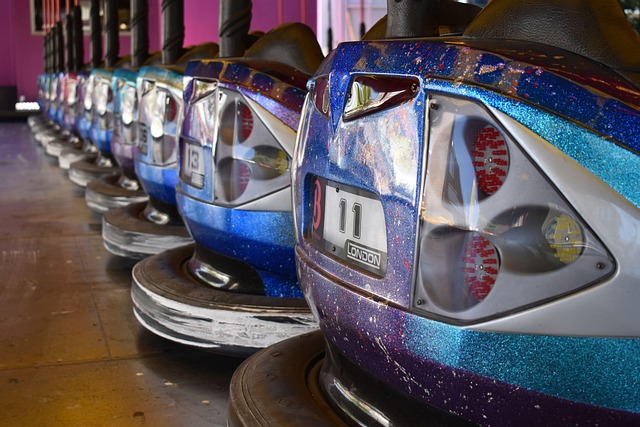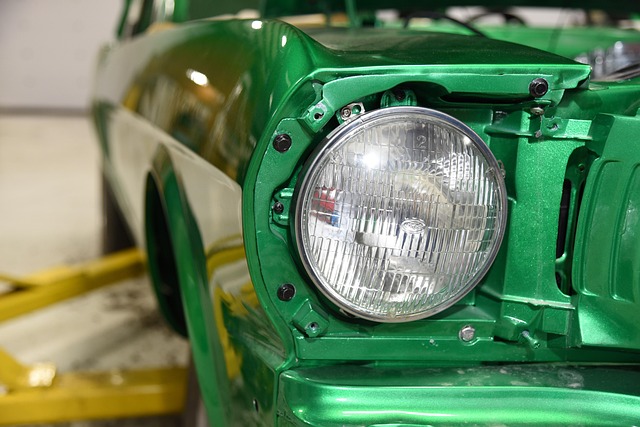Mercedes Fog Light Replacement: Guide for AMG & Sport Models
Mercedes fog light replacement is crucial for enhancing safety and visibility, especially in low-vis…….
In the realm of automotive technology, the pursuit of enhanced safety and visibility has driven significant innovations in lighting systems. Among these advancements, the replacement of fog lights in Mercedes vehicles stands out as a pivotal aspect of modern vehicle engineering. This article delves into the intricacies of Mercedes fog light replacement, exploring its definition, global impact, technological advancements, regulatory landscape, and future prospects. By examining these facets, we aim to provide an authoritative guide for enthusiasts, professionals, and anyone curious about this essential automotive feature.
Mercedes fog light replacement refers to the process of upgrading or replacing the original equipment manufacturer (OEM) fog lights in a Mercedes vehicle with new lighting components designed to improve performance, visibility, and safety during low-visibility driving conditions such as fog, mist, or heavy rain. Fog lights are specifically tailored to cut through dense atmospheric conditions, illuminating the road ahead and enhancing driver awareness.
The core components of a Mercedes fog light system typically include:
Fog Lights: These are specialized headlamps designed to project a narrow, focused beam of light, cutting through fog and mist while minimizing glare for oncoming drivers.
Control Unit: The control unit manages the fog lights’ operation, including turning them on and off, based on sensor input or driver selection.
Sensor(s): Sensors detect ambient lighting conditions and vehicle speed to activate the fog lights when needed, ensuring optimal visibility without blinding other drivers.
The concept of fog lights dates back to the early 20th century when motorists sought solutions to navigate through dense fog, a common challenge in many regions. Over time, fog lights evolved from simple incandescent bulbs to more advanced halogen and xenon configurations, offering improved brightness and reduced glare.
In Mercedes vehicles, fog light replacement is not merely an upgrade but a continuation of the brand’s legacy in automotive innovation. Mercedes-Benz, known for its commitment to luxury and safety, has consistently pushed the boundaries of lighting technology, ensuring their vehicles remain at the forefront of visibility and safety features. The replacement process allows owners to maintain this standard while incorporating the latest advancements.
The global impact of Mercedes fog light replacement is profound, reflecting a universal need for enhanced road safety and driving comfort. As weather conditions vary significantly across regions, so do the demands on lighting systems. In colder climates with frequent fog and snow, the importance of reliable fog lights is heightened, driving the demand for high-quality replacements.
LED Technology Dominance: Light Emitting Diode (LED) technology has revolutionized fog light performance. LED fog lights offer superior brightness, energy efficiency, and longer lifespans compared to traditional halogen bulbs. This trend is expected to continue, with more Mercedes models adopting LED fog lights as standard equipment.
Adaptive Lighting Systems: Advanced driver-assistance systems (ADAS) are increasingly integrating adaptive lighting features. These systems automatically adjust light distribution based on driving conditions, ensuring optimal visibility without causing glare. Such technology enhances safety and is a significant trend in premium vehicles like Mercedes.
Smart Sensor Integration: The integration of intelligent sensors and control units allows for more sophisticated fog light operation. These systems can detect not only ambient lighting but also vehicle speed, angle of steering, and weather conditions, optimizing fog light performance accordingly.
North America: In the United States and Canada, strict safety regulations encourage the adoption of advanced lighting systems, including fog lights. The availability of high-quality replacement parts is robust, with numerous aftermarket manufacturers catering to Mercedes owners.
Europe: European markets, particularly in northern countries like Germany and Scandinavia, experience frequent foggy conditions, making fog light replacement a common practice. The focus on safety and environmental regulations further drives the demand for reliable and efficient fog lights.
Asia Pacific: Rapid urbanization and increasing car ownership in regions like China and Japan lead to dense traffic and diverse weather patterns. As a result, there is a growing need for versatile lighting systems, including effective fog light replacements.
The global market for automotive lighting, including fog light replacement components, is experiencing steady growth. According to a recent report by Grand View Research, the global automotive lighting market size was valued at USD 48.73 billion in 2020 and is expected to grow at a compound annual growth rate (CAGR) of 7.5% from 2021 to 2028.
Mercedes, as a premium automotive brand, contributes significantly to this market. The company’s focus on innovation and safety drives investments in advanced lighting systems, influencing the demand for specialized fog light replacement parts. Aftermarket manufacturers cater to this demand by offering a range of products, from basic replacements to high-end performance upgrades.
Mercedes fog light replacement has economic implications beyond the automotive sector. The production and distribution of replacement parts contribute to various industries:
Automotive Manufacturing: Suppliers of fog light components play a vital role in supporting Mercedes’ manufacturing processes, ensuring consistent quality and performance.
Aftermarket Industry: Aftermarket manufacturers and retailers benefit from the demand for replacement parts, offering a diverse range of options at varying price points to cater to different consumer preferences.
Maintenance and Repair Services: Mechanics and repair shops provide fog light replacement services, contributing to local economies and supporting vehicle owners’ safety and comfort.
LED technology has revolutionized Mercedes fog light replacement, offering numerous advantages over traditional halogen bulbs:
Enhanced Brightness: LED fog lights provide significantly brighter illumination, improving visibility in low-light conditions.
Energy Efficiency: They consume less energy, contributing to fuel efficiency and reduced environmental impact.
Longer Lifespan: LEDs have a longer lifespan, reducing maintenance requirements and associated costs.
Adaptive lighting systems represent a significant leap forward in fog light technology:
Automatic Light Distribution: These systems adjust the beam pattern based on driving conditions, ensuring optimal visibility without causing glare to oncoming drivers.
Increased Safety: By automatically changing light distribution, they reduce blind spots and enhance overall safety, especially in challenging weather conditions.
Laser Technology: Laser-based fog lights are emerging as a potential game-changer, offering even greater brightness and longer ranges. However, their adoption is still in the early stages due to cost and regulatory considerations.
Smart Connectivity: Integrating fog lights with vehicle connectivity systems allows for remote control and monitoring, enhancing convenience and safety features.
Autonomous Vehicles: As autonomous driving technology advances, fog lights may play a crucial role in communication between vehicles, helping to navigate complex traffic scenarios safely.
The regulatory environment governing Mercedes fog light replacement varies across regions but generally focuses on ensuring vehicle safety and environmental compatibility:
European Union (EU): The EU’s European New Car Assessment Program (Euro NCAP) sets rigorous safety standards, including requirements for active safety features like adaptive lighting systems.
United States: The National Highway Traffic Safety Administration (NHTSA) and the Environmental Protection Agency (EPA) enforce regulations related to vehicle lighting, ensuring it meets specific performance and environmental criteria.
China: The China New Car Assessment Program (C-NCAP) has strict safety standards, encouraging the adoption of advanced lighting systems to enhance road safety.
Regulatory bodies implement various measures to govern fog light replacement:
Performance Standards: Regulations set minimum performance criteria for fog lights, including brightness, beam pattern, and operating conditions.
Emissions Controls: In some regions, the environmental impact of lighting systems is considered, with regulations focusing on reducing energy consumption and associated emissions.
Safety Certification: Vehicles must undergo safety certification processes that include rigorous testing of lighting systems, ensuring they meet defined standards.
Despite significant advancements, Mercedes fog light replacement faces several challenges:
Cost: High-end LED and adaptive lighting systems can be expensive, making them less accessible to budget-conscious consumers.
Compatibility Issues: Ensuring that replacement parts are compatible with various Mercedes models and years can be complex, requiring detailed engineering knowledge.
Regulatory Compliance: Keeping up with evolving regulations across different regions is a significant challenge for manufacturers and importers of replacement parts.
Criticisms of Mercedes fog light replacement include:
Lack of Standardization: The diverse range of fog light configurations across different Mercedes models can make finding universal replacements difficult. Standardization efforts could improve accessibility and reduce costs.
Overwhelming Options: Aftermarket manufacturers offer a vast array of options, making it challenging for owners to choose the best replacement parts. Comprehensive consumer education and transparent product information can address this issue.
Environmental Concerns: While LED technology is more energy-efficient, the environmental impact of manufacturing and disposal should be considered. Encouraging recycling programs and sustainable production methods can mitigate these concerns.
Germany, known for its strict safety standards, implemented a nationwide initiative to equip new vehicles with advanced adaptive lighting systems, including fog lights. This program aimed to reduce road accidents caused by poor visibility. Mercedes, as a leading German automaker, played a pivotal role in this initiative by offering their latest adaptive lighting technology across various models.
Lessons Learned:
In Japan, where frequent foggy conditions pose challenges for drivers, the adoption of LED fog lights has been remarkable. Aftermarket manufacturers introduced high-performance LED fog lights that offered improved visibility and energy efficiency compared to traditional halogen bulbs. Many Mercedes owners in Japan opted for these upgrades, leading to enhanced safety and reduced maintenance costs.
Lessons Learned:
The future of Mercedes fog light replacement is promising, with several growth areas and emerging trends:
Global Expansion of LED Technology: As LED technology continues to mature, its global adoption will increase, driven by cost efficiency, improved performance, and environmental benefits.
Integration of Advanced Driver Assistance Systems (ADAS): The integration of ADAS features, such as adaptive cruise control and lane-keeping assist, will further enhance the importance of fog lights as part of a comprehensive lighting system.
Smart City Lighting: As cities embrace smart city initiatives, fog lights may play a role in urban mobility solutions, communicating with other vehicles and infrastructure to optimize traffic flow.
Wireless Control and Update Capabilities: Future fog light systems may incorporate wireless connectivity, allowing for remote control and over-the-air software updates, enhancing convenience and performance.
Personalized Lighting Settings: Vehicles may offer customizable lighting profiles, enabling drivers to adjust fog light settings based on their preferences and driving conditions.
Integration with Electric Vehicle (EV) Systems: As EV adoption grows, fog lights will need to integrate seamlessly with these vehicles’ unique power management systems and charging requirements.
Mercedes fog light replacement is a dynamic field that reflects the ongoing pursuit of enhanced safety, visibility, and driving comfort. The global impact of this phenomenon is evident in the diverse trends shaping its trajectory. From technological advancements like LED lighting to regulatory frameworks ensuring safety and environmental compatibility, the landscape is constantly evolving.
As we look ahead, the future holds exciting possibilities for Mercedes fog light replacement, with potential growth areas and emerging technologies poised to revolutionize driving experiences worldwide. By embracing innovation and collaborating across industries, we can continue to improve road safety and make every journey a brighter, safer one.
Q: Why are LED fog lights better than halogen bulbs?
A: LED fog lights offer superior brightness, energy efficiency, and longer lifespans compared to halogen bulbs. They also produce less heat, reducing the risk of fogged-up headlight lenses.
Q: Can I install a fog light replacement myself?
A: Some replacements are straightforward and can be installed by enthusiasts, but complex systems may require professional installation for optimal performance and safety.
Q: How do I know if my Mercedes needs new fog lights?
A: Regularly inspect your fog lights for any signs of damage or decreased brightness. If you notice dimming or flickering, or if the lenses are cracked or yellowed, it’s a good indication that a replacement is needed.
Q: Are there legal restrictions on fog light brightness?
A: Yes, regulations vary by region but generally set minimum and maximum brightness levels for fog lights to ensure safe visibility without causing glare to oncoming drivers.
Q: Can fog lights improve fuel efficiency?
A: Yes, LED fog lights, in particular, consume less energy than halogen bulbs, contributing to improved fuel efficiency and reduced environmental impact.

Mercedes fog light replacement is crucial for enhancing safety and visibility, especially in low-vis…….

Mercedes fog light systems with high-intensity discharge (HID) bulbs can burn out, causing reduced v…….

Mercedes fog light replacement requires careful steps including identifying and removing faulty ligh…….

Water ingress in Mercedes fog lights is a common issue causing premature failure and reduced perform…….

Mercedes fog lights require regular maintenance due to environmental factors and age-related degrada…….

Replace your old or damaged Mercedes fog lights with new, high-quality LED bulbs for better night vi…….

Before tackling a Mercedes fog light replacement DIY project, assess your comfort level with car mai…….